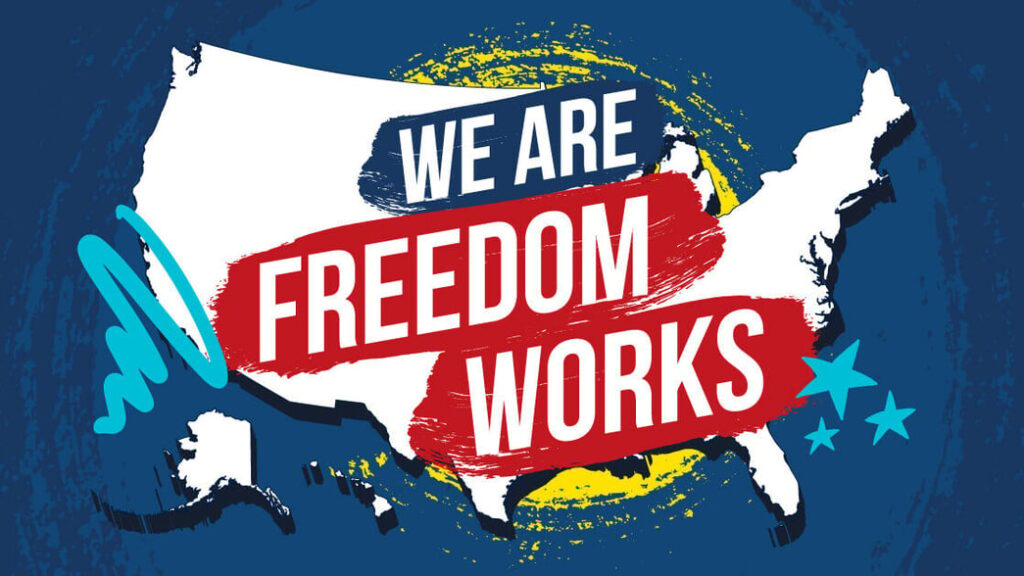Capitol Comment 432
To download the PDF of this article, please click here.
When considering a piece of legislation, Congress often stresses the importance of the “score” or cost estimate that government agencies such as the Congressional Budget Office (CBO) give the bill. But how accurate have past government estimates been? In this paper, FreedomWorks Foundation looks at the government’s track record when it comes to estimating the cost of major legislation. We find that although the score is important, it should at best be considered the very least that a given bill may cost. At worst, estimates have been up to 2,600% higher than the actual cost of legislation. These finding suggest that the Senate healthcare bill will most likely cost American taxpayers trillions of dollars more than the $848 billion that the CBO is currently projecting over the first 10 years.
In fact, the current CBO score has already come under fire because it accounts for 10 years of tax increases but only 6 years of full implementation of the program. It has been estimated that the 10 year cost of full implementation from 2014-2023 is closer to $2.5 trillion and even this figure lacks the unfunded mandates that, in the similar case of Massachusetts, accounts for 60 percent of health reform costs.
PRIOR ESTIMATES:
- The Medicare Program: When Medicare was instituted in 1965, there was no Congressional Budget Office. Instead, in 1967 House Ways and Means analysts estimated the cost of the program. Medicare, they predicted, would cost $12 billion in 1990. (1) They were wrong—by a staggering factor of 10. The actual spending in 1990 was $110 billion. (2) And Medicare costs continue to skyrocket. Through the first 9 months of 2009, Medicare has cost taxpayers $314 billion and that price tag continues to grow by 10%. (3)
In the case of the Medicare Program, the government estimate was off by over 816%. If the CBO estimate for the Senate health care bill is off by the same percentage, then the price of reform may be as high as $7.74 trillion.
- Medicare Part A: In 1965, the House Ways and Means Committee estimated that Medicare Part A, the hospital insurance part of the Medicare program, would cost $9 billion in 1990. (4) Once again, they were wrong. The actual cost of Part A in 1990 was $67 billion. (5) In 1994, the analyst responsible for the severe underestimate admitted that even when accounting for inflation, “the actual [Part A] experience was 165% higher than the estimate.” (6)
In the case of the Medicare Part A, the government estimate was off by 165%. If the CBO estimate for the Senate health care bill is off by the same percentage, then the price of reform may be as high as $2.24 trillion.
- Medicare Home Care Benefit: In 1988, the projected 1993 cost of the Medicare Home Care Benefit was $4 billion. (7) The actual 1993 cost was $10 billion. (8)
In the case of the Medicare Home Care Benefit, the government estimate was off by 150%. If the CBO estimate for the Senate health care bill is off by the same percentage, then the price of reform may be as high as $2.1 trillion.
- Social Security: When the Social Security Act of 1935 was being debated in Congress, the cost projections for the program extended all the way to 1980. At that time, it was estimated that the federal government would pay out $4 billion in Social Security payments in 1980. (9) In reality it paid out a staggering $108 billion. (10)
In the case of Social Security pay outs, the government estimate was off by a massive 2,600%. If the CBO estimate for the Senate health care bill is off by the same percentage, then the price of reform may be as high as $22.89 trillion.
- End Stage Renal Disease (ESRD) Program: Congress passed entitlement legislation that provided kidney dialysis for citizens suffering from ESRD in 1972. It was predicted that the program would cost taxpayers $100 million in 1974.11 The estimates were off and the program ended up costing $229 million in that year.12
In the case of the ESRD Program, the government estimate was off by 129%. If the CBO estimate for the Senate health care bill is off by the same percentage, then the price of reform may be as high as $1.94 trillion.
- The Medicaid Disproportionate Share Hospital (DHS) Program: The Medicaid DHS Program is used by states to aid hospitals that treat a high number of Medicaid and uninsured patients. In 1987, Congress estimated that the cost the program would be $1 billion in 1992.13 The actual cost was 17 times larger than the congressional estimate. Medicaid DHS cost taxpayers $17 billion in 1992.14
In the case of the Medicaid DHS Program, the government estimate was off by 1,600%. If the CBO estimate for the Senate health care bill is off by the same percentage, then the price of reform may be as high as $14.4 trillion.
1.”ObamaCare’s Real Price Tag: The funding gap is a canyon by year 10.” The Wall Street Journal [New York] 6 Aug. 2009. Print.
2. Ibid.
3. Ibid.
4. United States of America. Joint Economic Committee. Ranking Republican Member. Are Health Care Reform Cost Estimates Reliable? History Shows True Costs Are Often Significantly Understated. By Senator Sam Brownback. Washington DC, July 31, 2009. Print. (Further references will be denoted: Brownback)
5. Ibid.
6. Ibid.
7. Ibid.
8. Ibid.
9. Myers, Robert J. “Actuarial Reminiscences on Social Security over a Century– 50 Years Past and 50 Years Future.” Social Security Online – The Official Website of the U.S. Social Security Administration. Web. 10 Dec. 2009. <http://www.socialsecurity.gov/history/50rm.html>.
10. Ibid.
11. Brownback
12. Ibid.
13. Ibid.
14. Ibid.
Related Content
FreedomWorks Letter to Congress in Support of the Fiscal Commision Act (H.R. 5779)
FreedomWorks Letter to Congress in Support of Fiscal Commision Act (H.R. 5779)




